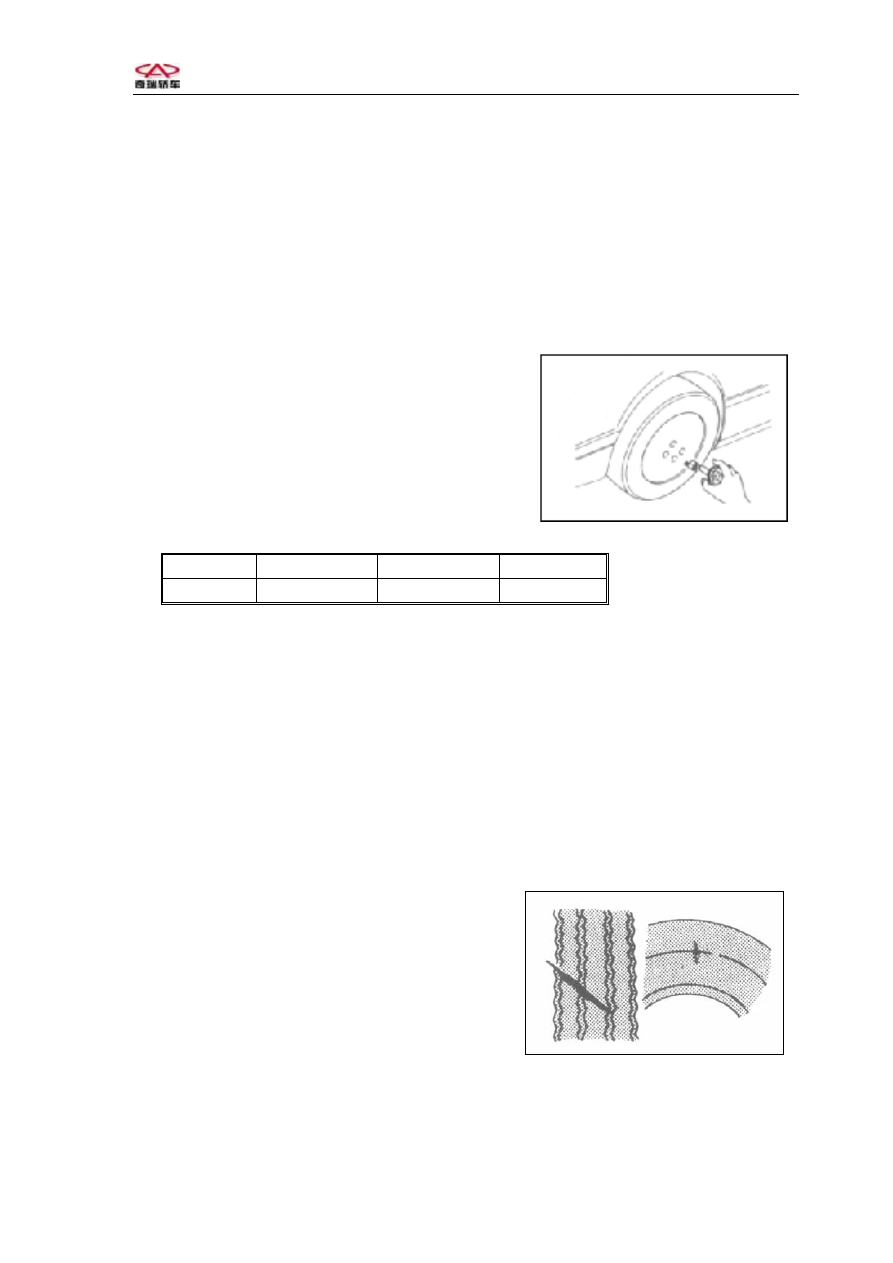Chery S11 / Chery QQ. Manual - part 194

Chery QQ Maintenance Manual Chassis System
Chapter two Tests and Adjustments of
Four-Wheel Positioning
Section One: Basic Tests and Checks
Preparations prior to adjustments
I. Checks prior to adjustments
(1)Checks on tire air pressure
(2)Checks on car body
1、Check the tire air pressure,
and adjust to the specified pressure.
Standard air pressure for tires (kPa)
Item
Front wheel
Rear wheel
Spare tire
Zero load
220
220
250
2、Check the spacing of front wheel bearings, and replace the front wheel bearings when
necessary;
3、Check the status of the wheel outer rims, as well as the status of the wheel sections and
tires;
4、Check to see if the ball joint of the horizontal draw-bar for turning is too loose;
5、Place the car on a leveled ground without any luggage or passenger;
6、Make sure that the left and right heights from the wheel center line to the dasher do not
exceed the standard heights;
7、Check to see if the absorber performance is normal.
II. Rim section and tire
1、Visual checks
Check the tires and rim sections, and make proper
replacements if any cracks, damages, deformations
or other defects are detected on the rim sections or
tires.
Tears and wears of tire
- 58 -